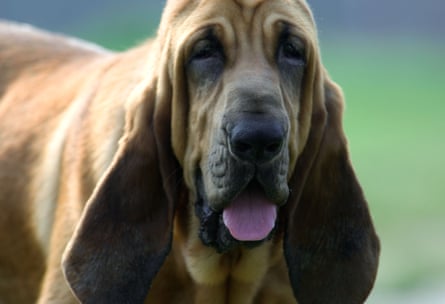“Why are mongrels a dying breed?” Jilly Cooper wondered out loud in 2013. She might equally have asked “Whatever happened to pedigrees?” She was referring to the fact that the dogs you meet these days are seldom pure-bred or mutt, but tongue-twisting mash-ups: labdradoodle, puggle, cavapoo, zuchon, beaglier. The emergence of these artful hybrids in recent years is the result of the marketplace’s demand for an animal designed with human needs in mind: loyal but not clingy, confident yet chilled, fluffy as a puffball but mercifully inclined to hang on to its own hair. And exactly the right size to fit into your car.
Dogs, then, are largely humanmade manufactures, their changing shape and proliferating forms the consequence of fantasy, hope and greed (a good crossbreed with all its papers now goes for as much as its pedigreed parents). Selective breeding is how it’s done, the careful matching of mates in order to produce puppies with exactly the desired characteristics. It’s both incredibly simple – dogs are generally delighted with whatever blind date you’ve set up for them – and profoundly powerful. For within just a few generations, and bear in mind that a dog generation may be as little as six months, you can change the shape of a snout or tame a nasty temper. Within a few more generations you could, in theory, have invented a whole new breed.
In this fascinating book, three leading historians of science explore the origins of what they call the “modern” dog. For millennia, canine companions were roughly sorted into types suited for certain tasks. There were big dogs to pull people out of the snow and little dogs to turn the spit, medium-sized dogs to run after sheep and “toy” dogs to sit on ladies’ laps. But with the dawning of the 19th century came a new desire to count, measure, regulate and, above all, improve the natural world. Drawing on the expertise of livestock farmers who had worked out how to produce fluffier sheep, milkier cows and porkier pigs, country gentlemen set about tinkering with their sporting dogs. Spaniels, beagles and retrievers were refined and defined into stable categories that could be guaranteed to breed “true”. By cleaning up the bloodlines, every new pup would henceforth be an exact copy of its parents.
At the same time, explain Michael Worboys, Julia-Marie Strange and Neil Pemberton, there was another set of people who had skin in the dog-breeding game. They comprised the “Fancy”, a loose grouping of urban working-class men who traded dogs for profit. Often operating out of pubs and barber shops, the Fancy was interested in spectacle and show. It liked pretty dogs, ratting dogs, dogs with a bit of pep to them. Infuriated by the way the country gents on judging panels kept giving gongs to their friends and refusing to say why, the Fancy insisted on coming up with a standardised set of “points” for each breed against which an individual animal might be objectively assessed. Now there were earnest discussions and brisk disagreements about the correct angle of an ear or the desired curl of a tail.

All this sounds sensible. But the Fancy started taking things too far in its scramble to win prizes and make trades. Intense overbreeding resulted in bulldogs that looked like monstrous toads, bloodhounds so slobbery they could barely get their food down, and toy dogs that were nothing but “goggle-eyed abortions”. What was needed, huffed the gentlemen, were competitions that moved away from the beauty pageant and towards the field trial. Until you’d seen a dog in its natural environment, which is to say tearing round a muddy meadow in a thick drizzle, you couldn’t begin to form an opinion on whether or not it was up to snuff.
Tempers started to fray to the point where, in 1880, one breeder sued the newspapers for libelling his prizewinning bloodhound. The case went on for two days and involved 13 expert witnesses lining up to give their opinion on whether it was fair to describe Napier as “slack loined”. Increasingly, though, such parochial bickerings were filtered through the more general preoccupations of the day. By the 1890s, there was plenty of xenophobic chatter about how canine “alien immigration” – all those dachshunds and schipperkes flooding in from the continent – was causing “Dogdom’s Deterioration”. Miscegenation was blamed, too, for a certain lowering of the doggy moral tone: a pedigree bitch who had an accidental mating with a mongrel hadn’t simply spoiled a single litter, she had ruined her womb for ever. From now on, all her puppies, no matter how well bred their sire, would bear the indelible stain of their mother’s sluttishness.
Worboys, Strange and Pemberton have produced a magnificent book. It’s not clear how three scholars have managed to blend their distinguished voices into a single one without sounding as if they are writing by committee. But they have, and the result is a wonderfully lively text that traces the sources of our own obsession with doggy design and offers a gentle warning about what is at stake when we fiddle too far.

Comments (…)
Sign in or create your Guardian account to join the discussion